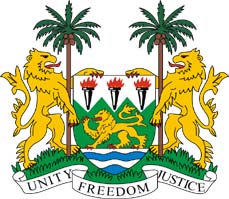
His Excellency Dr. Ernest Bai Koroma ( since 2007)
Sierra Leonean(s).
27,653 sq. mi. (71,740 sq. km);
Total Area 27,699 sq mi (71,740 sq km)
Freetown, 1.2 million
35.1% (2004 est.)
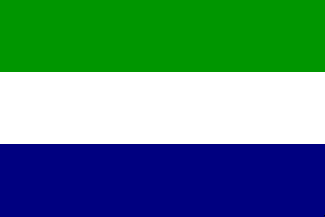
Leone
birth rate: 38.12/1000; infant mortality rate: 76.64/1000;
life expectancy: 56.55; density per sq mi: 205.6
The Republic of Sierra Leone is a State, based on the principles of Freedom, Democracy and Justice. Its sovereignty belongs to the people of Sierra Leone, from whom Government through the Constitution derives all its powers, authority and legitimacy; The security, peace and welfare of the people of Sierra Leone is the primary purpose and responsibility of Government, and to this end it is the duty of the Armed Forces, the Police, Public Officers and all security agents to protect and safeguard the people of Sierra Leone. The participation of the people in the governance of the State on the other hand is ensured in accordance with the provisions of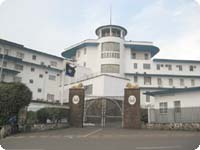 the Constitution
the Constitution
English (official), Mende (southern vernacular), Temne (northern vernacular), Krio (lingua franca)
20 native African tribes 90% (Temne 30%, Mende 30%, other 30%); Creole (Krio) 10%; refugees from Liberia's recent civil war, small numbers of Europeans, Lebanese, Pakistanis, and Indians. Religions: Islam 60%, indigenous 20%, Christian 20%
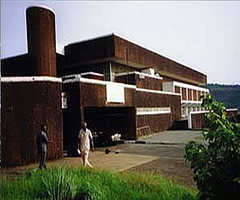
The indigenous population is made up of 18 ethnic groups. The Temne in the north and the Mende in the south are the largest. About 60,000 are Krio, the descendants of freed slaves who returned to Sierra Leone from Great Britain and North America and from slave ships captured on the high seas. In addition, about 4,000 Lebanese, 500 Indians, and 2,000 Europeans reside in the country. In the past, Sierra Leoneans were noted for their educational achievements, trading activity, entrepreneurial skills, and arts and crafts work, particularly woodcarving. Many are part of larger ethnic networks extending into several countries, which link West African states in the area. However, the level of education and infrastructure has declined sharply over the last 30 years.
GDP/PPP (2011 est.): $5.158 billion per capita $ 900. 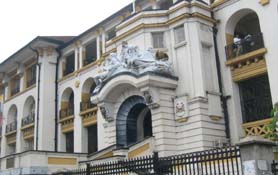
Real growth rate: 5.3%.
Inflation rate: 18%.
Natural resources: Diamonds, rutile, bauxite, gold, iron ore, ilmenorutile, platinum, chromite, manganese, cassiterite, molybdenite, as well as forests, abundant fresh water, and rich offshore fishing grounds. Agriculture: Products--coffee, cocoa, ginger, palm kernels, cassava, bananas, citrus, peanuts, cashews, plantains, rice, sweet potatoes, vegetables. Land--30% potentially arable, 8% cultivated. Industry: Types--diamonds, bauxite, and rutile mining; forestry; fishing; beverages; cigarettes; flour; cement and other construction goods; plastics; tourism. Trade (Oct. 2007-Dec. 2008): Exports--$182 million: rutile, diamonds, bauxite, coffee, cocoa, fish. Major destinations of exports--Belgium, Germany, U.K., the Netherlands, India, and U.S. Imports--$534 m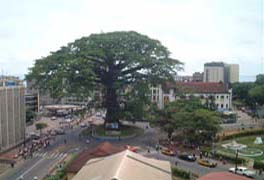 illion: foodstuffs, machinery and equipment, fuel and lubricants, chemicals, pharmaceuticals, building materials, light consumer goods, used clothing, textiles. Main origins of imports--Germany, Cote d’Ivoire (fuel), U.K., U.S., China (manufactured goods).
illion: foodstuffs, machinery and equipment, fuel and lubricants, chemicals, pharmaceuticals, building materials, light consumer goods, used clothing, textiles. Main origins of imports--Germany, Cote d’Ivoire (fuel), U.K., U.S., China (manufactured goods).
Belgium, Germany, U.S., UK, Côte d'Ivoire, China, Netherlands, South Africa, France (2004). Member of Commonwealth of Nations
Sources: Infoplease
 UN
UN